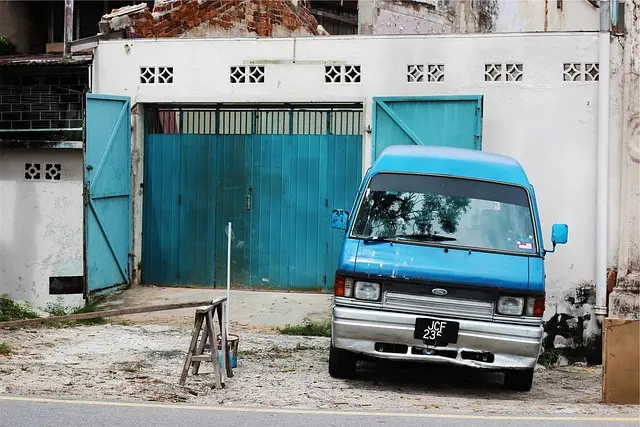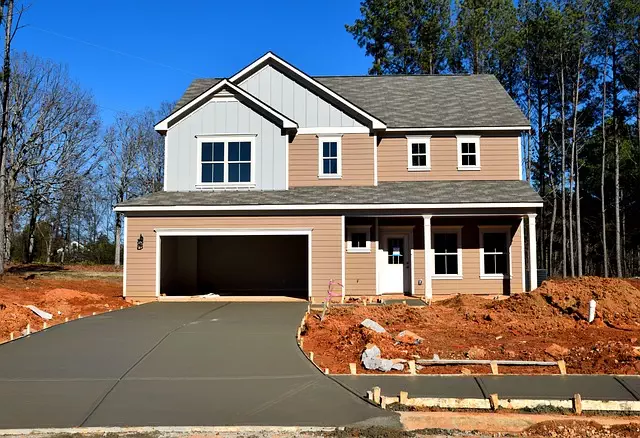Choosing the right driveway resurfacing method in cold climates like Toledo is key for durability. While asphalt is popular but vulnerable to cracking, concrete offers better longevity despite frost and thaw cycles. Planning during fall, proper preparation, high-quality materials, and skilled contractors are vital for successful resurfacing. Regular sealing and crack maintenance extend the life of both concrete and asphalt driveways, ensuring they withstand harsh winters without compromising aesthetics or functionality. For optimal results, consider driveway resurfacing services in Toledo that specialize in concrete or asphalt based on specific climate needs.
In frigid climates like Toledo’s, driveway resurfacing presents unique challenges. Snow, ice, and extreme temperatures can compromise the integrity of existing surfaces. This article guides you through the intricacies of driveway resurfacing in cold weather, focusing on effective strategies and material choices. We explore the pros and cons of asphalt versus concrete for a durable solution tailored to Toledo’s harsh conditions. Learn top tips to maintain your resurfaced driveway year-round, ensuring long-lasting results despite challenging climates. Discover the secrets to successful driveway resurfacing services in Toledo here.
- Understanding Driveway Resurfacing in Cold Weather: Challenges and Considerations
- Asphalt vs Concrete: Choosing the Right Surface for Resurfacing in Toledo
- Effective Strategies for Successful Driveway Resurfacing in Winter
- Top Tips to Maintain Your Resurfaced Driveway Through Harsh Climates
Understanding Driveway Resurfacing in Cold Weather: Challenges and Considerations
When considering driveway resurfacing in cold climates, it’s crucial to understand the unique challenges that come with seasons like winter. In areas like Toledo, where temperatures regularly drop below freezing, selecting the right resurfacing method is essential. Asphalt and concrete, two common materials for driveway resurfacing services, react differently to cold weather.
Asphalt driveway resurfacing, popular in many regions, might not be the best choice during colder months due to its sensitivity to low temperatures. It can become brittle, leading to potential cracking and breaking over time. On the other hand, concrete driveway resurfacing offers more durability in cold climates as it sets up and hardens, providing a stronger surface capable of withstanding frost and thaw cycles. However, proper preparation is vital, including ensuring adequate drainage and addressing any existing cracks before applying new layers to achieve the best results for your Toledo driveway.
Asphalt vs Concrete: Choosing the Right Surface for Resurfacing in Toledo
When considering driveway resurfacing in Toledo, homeowners often grapple with the choice between asphalt and concrete. Both have their merits, but each is better suited to different conditions, particularly in our region’s cold climates. Asphalt, a popular choice for many, offers flexibility and ease of repair but can be more susceptible to damage from extreme temperatures and water. It may crack and become uneven over time, especially during freezing and thawing cycles, which are common here in Toledo.
Concrete, on the other hand, provides a durable and long-lasting surface that can withstand harsh weather conditions better. While it might seem more expensive upfront, concrete is a smart investment for those seeking a robust and low-maintenance option. Professional driveway resurfacing services in Toledo often recommend concrete for areas prone to frost heaving and severe winters. Its strength and stability ensure a smoother, safer driving experience even as the seasons change.
Effective Strategies for Successful Driveway Resurfacing in Winter
In cold climates, driveway resurfacing projects often present unique challenges due to seasonal conditions. When considering options for driveway resurfacing in Toledo, whether it’s asphalt or concrete, timing is crucial. Planning during fall allows for a successful completion before winter sets in fully. This is essential because new surfaces need time to cure and set properly, which requires milder temperatures.
To ensure optimal results, property owners should consult with reputable driveway resurfacing services. Professionals recommend avoiding extreme cold as it can lead to weak spots, cracks, or uneven healing of the new material. Proper preparation involves clearing debris, repairing existing damage, and ensuring proper drainage to prevent water accumulation, which is a common issue in winter. Choosing the right materials, such as high-quality asphalt or concrete, and hiring skilled contractors familiar with cold climate installations are key strategies for successful driveway resurfacing during winter months.
Top Tips to Maintain Your Resurfaced Driveway Through Harsh Climates
Maintaining your freshly resurfaced driveway in a cold climate requires strategic measures to ensure longevity. One of the primary concerns is preventing water damage; snow and ice can cause significant wear and tear, so regular cleaning and de-icing are essential. Use a soft brush or vacuum to remove dirt and debris, especially after heavy storms, as this can lead to potholes over time. For concrete driveways, apply a sealer annually to shield against moisture penetration, which could weaken the structure.
When it comes to asphalt, regular maintenance involves sealing cracks and applying new coats of sealcoat to protect against elements like salt and chemicals often used de-icing. Professional driveway resurfacing services in Toledo recommend these steps to extend the life of your investment, ensuring a sturdy surface that can withstand harsh winters without compromising its aesthetics or functionality.


